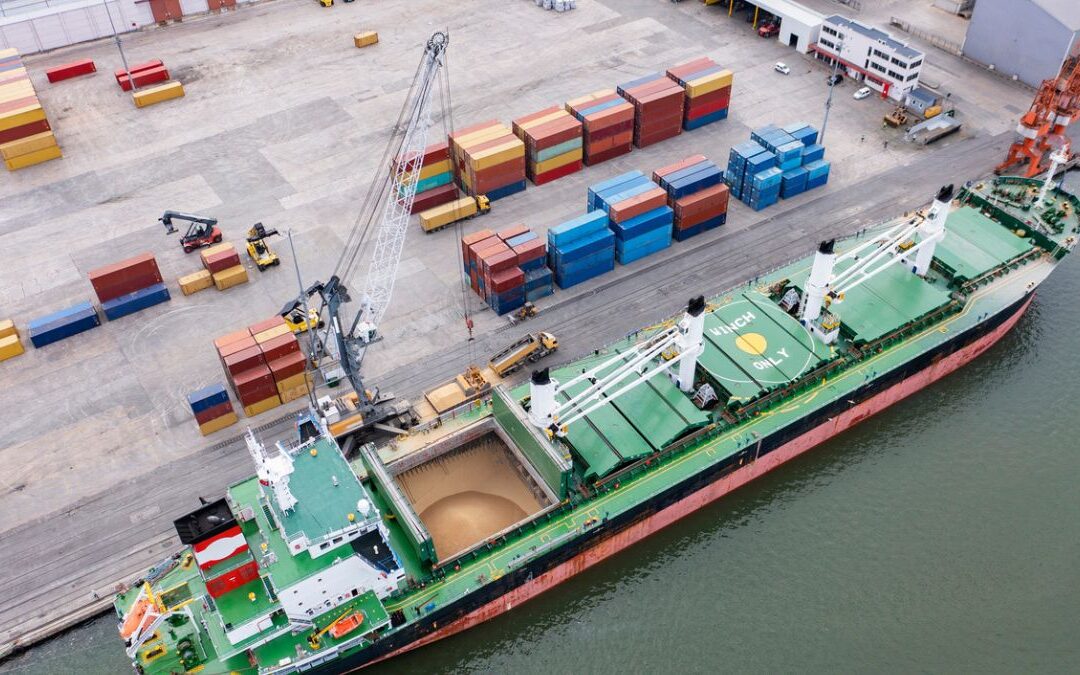Sea freight plays a critical role in global trade, enabling the movement of vast quantities of goods across the world’s oceans. Whether you are a business owner exploring shipping options or simply curious about international logistics, understanding the process is key to making informed decisions.
In short, the sea freight shipping process involves a series of coordinated steps, ensuring cargo is transported efficiently from one port to another.
So, what does that process look like?
What is sea freight forwarding?
Let’s start with the basics first, sea freight forwarding is the transportation of goods via ships across international waters. It is suitable for shipping large volumes of goods.
Did you know that shipping freight is one of the oldest and most widely used forms of transport for global trade? Yet, it still accounts for over 80% of all internationally traded goods.
How does sea freight work?
The sea freight process involves various stakeholders, including shippers, carriers, freight forwarders and customs authorities, all working together to move goods from the seller to the buyer.
The journey is more complex than just placing goods on a vessel, as it requires extensive planning and coordination.
The process follows a structured flow, involving several steps that ensure the smooth transportation of goods:
- Booking and documentation
The first step involves booking a space on a cargo vessel. This can be done through a sea freight forwarder who acts as an intermediary between the shipper and the carrier. Accurate documentation, such as the bill of lading (BoL), commercial invoice and packing list, must be prepared and submitted to ensure the smooth movement of goods. - Collection of goods
Once the shipment is booked, the cargo is collected from the shipper’s warehouse and transported to the port of departure. This phase may involve additional logistics, such as trucking or rail services, depending on the location of the shipper. - Export customs clearance
Before goods can be loaded onto a vessel, they must clear export customs in the country of origin. This step involves submitting the necessary paperwork to local customs authorities to confirm that the shipment complies with international trade laws. - Sea transport
After customs clearance, the cargo is loaded onto a vessel. The duration of sea transport depends on the distance between the port of origin and the destination. Sea freight is slower than other transport options, such as air freight, but it offers the advantage of carrying large volumes of goods at a lower cost. - Import customs clearance
Upon arrival at the destination port, the goods must clear import customs. The receiving party (importer) works with customs officials to ensure that all duties, taxes and relevant regulations are satisfied before the cargo can be released. - Final delivery
Once cleared by customs, the cargo is either picked up by the buyer or delivered to the final destination using local transport. This stage often involves coordination with a freight forwarder or logistics provider to ensure timely delivery.
How is sea freight calculated?
Costs are calculated based on various factors, including:
- Weight and volume: freight rates are often determined by the weight and volume of the cargo. The higher the volume, the more space the goods occupy on a vessel, affecting the cost.
- Shipping route: longer routes or those passing through congested or high-risk areas may incur higher charges.
- Container type: shipping in a full container load (FCL) is generally more cost-effective for large shipments, while smaller loads might be transported as less-than-container load (LCL), which could attract higher rates per unit.
- Fuel surcharges and port fees: these variable costs can also impact the total price of sea freight.
Working with a sea freight forwarder simplifies the process, as they can provide accurate quotes and ensure you get the best possible rate for your cargo.
Is air freight more expensive than sea freight?
Yes, air freight is typically the more expensive option due to the faster transit times and the limited capacity of aircraft compared to ships. Opting for the right method really depends on your needs, sea freight tends to be better value for large shipments or bulk cargo, whereas air freight is ideal for time-sensitive goods that need to reach their destination quickly. Balancing cost with speed is crucial when choosing between air and sea freight.
Forwarders can advise on the best option depending on your shipping requirements.
Advantages and disadvantages of sea freight
Understanding the pros and cons is essential for deciding whether sea freight is your best option for transporting goods.
Advantages of sea freight:
- Cost-effective for large volumes: sea freight is much cheaper than air freight when shipping large quantities or bulky items.
- Environmentally friendly: shipping by sea is more fuel-efficient and generates fewer carbon emissions than air freight, making it a greener choice.
- Global reach: with sea freight, you can ship to nearly every corner of the globe, even to remote regions where air transport is unavailable.
Disadvantages of sea freight:
- Longer transit times: sea freight can take several weeks, depending on the distance, which may not be suitable for urgent shipments.
- Delays due to weather or port congestion: ships are more susceptible to delays caused by weather conditions or port congestion, which can extend delivery times.
Conclusion
The sea freight process is an essential component of international trade, enabling businesses to transport large volumes of goods across the globe. By understanding how sea freight works, the role of sea freight forwarders and how sea freight is calculated, businesses can make informed decisions about their logistics strategies. While air freight offers faster transit times, sea freight provides a cost-effective solution for bulk shipments, especially for businesses looking to save on shipping costs.
For more information on how to optimise your sea freight shipments, visit Uniserve’s dedicated sea freight services page. We offer tailored solutions to meet your global logistics needs.

